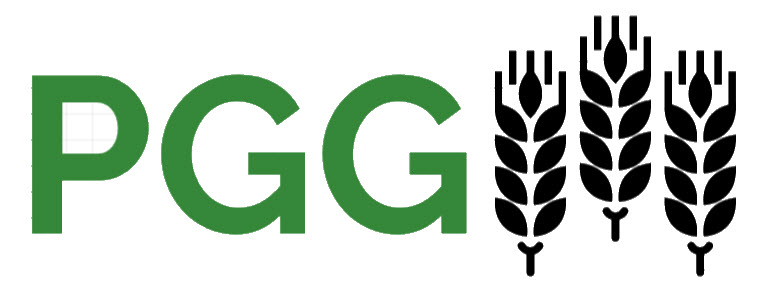Contents
Cereal grains are the seeds of grasses cultivated for food, making up a significant part of the global diet and serving as a primary food source for humans and animals alike. These grains are rich in carbohydrates and provide a fair amount of proteins, vitamins, and minerals, which are essential for human health. They are versatile and used in a wide range of foods from breakfast cereals to bread, pasta, and even beverages. Here’s an overview of the most common cereal grains, their characteristics, and their uses.

Types of Cereal Grains
1. Wheat: One of the oldest and most widely produced and consumed grains globally. Wheat is a staple in Western diets and is used to make bread, pasta, pastry, cereals, and more. It is valued for its gluten content, which provides elasticity in dough.
2. Rice: A primary food source for over half the world’s population, especially in Asia. Rice comes in various types, including white, brown, and basmati, each with unique flavors and nutritional profiles. It’s used in countless dishes, from savory meals to desserts.
3. Corn (Maize): Originating in the Americas, corn is now grown worldwide in suitable climates. It’s consumed directly as sweet corn or processed into products like cornmeal, corn syrup, and corn oil. Corn is also a major feed grain for livestock.
4. Barley: One of the first domesticated grains, barley is today primarily used in animal feed, brewing beer, and making whiskey. Barley is rich in fiber, especially the soluble fiber beta-glucan, which can help lower cholesterol levels.
5. Oats: Oats are highly nutritious, rich in beta-glucan fiber, which is known for its heart health benefits. They are mainly eaten as porridge, oatmeal, and in baked goods, but are also used in animal feed. While wheat has gliadin as its gluten protein, oats have avenin. Avenin is a type of gluten protein and can trigger a reaction in some people with celiac disease.
6. Rye: Rye is hardy and grows well in poor soils where other grains might not thrive. It’s used to make rye bread, crispbread, whiskey, and vodka. Rye has a distinctive, hearty flavor and is rich in nutrients and fiber.
7. Sorghum: An important crop in Africa and Asia, sorghum is drought-resistant, making it valuable in arid regions. It’s used for food, animal fodder, and the production of alcoholic beverages. Sorghum flour is a popular gluten-free cereal.
8. Millet: A group of small-seeded grains that are staple foods in parts of Africa and Asia. Millets are gluten-free and used in making porridges, traditional bread, and beverages. They are rich in B vitamins, calcium, iron, potassium, and magnesium.
Early history
Rye, barley, wheat, and oats were gathered for food in the Fertile Crescent in the early Neolithic period. One example is from the Ohalo II archaeological site in Israel, where 19,000 year old charred wild wheat and barley have been found. In the Fertile Crescent, the earliest signs of domesticated cereal is domesticated barley and domesticated wheat dated to roughly 8,000 years ago.
Rice farming first developed in China. As a part of this, people began using fire to clear land and redirect water to flood fields. Based on archaeological and linguistic evidence, the rice Oryza sativa was domesticated in the Yangtze River basin 13,500 to 8,200 years ago. Roughly 3,000 years ago, the rice Oryza glaberrima was domesticated in the inland delta of the Upper Niger River in Africa.
Nutritional Value
Cereal grains can be an important source of energy. They provide complex carbohydrates, which are the body’s primary energy source, as well as a variety of nutrients, including B vitamins (niacin, thiamin, and riboflavin), iron, magnesium, and selenium. Whole grains, which include the bran, germ, and endosperm, are particularly nutritious, offering dietary fiber, antioxidants, and phytochemicals that contribute to heart health, digestive health, and reduced risk of chronic diseases.
Some cereals are deficient in the essential amino acide lysine. Legumes are rich in lysine, and eating both cereals and legumes are common in traditionally vegetarian cultures. Many legumes are deficient in the essential amino acid methionine, while many cereals contain methionine. Thus, correctly combining cereals and legumes can help create a well-balanced diet. There are many examples of such combinations from around the world. In India, rice is frequently eaten together with lentils (dal). In the Americas, many people have a long tradition of combining maize (corn) with beans. In the contemporary United States, wholegrain bread smeared with peanut butter has become a popular choice.

Considerations
While cereal grains are a fundamental part of many diets, some individuals may need to avoid certain grains due to allergies or intolerances, such as celiac disease, which requires a gluten-free diet. For those able to consume grains, integrating a variety of whole grains into meals can contribute to a balanced and nutritious diet.
In conclusion, cereal grains play a crucial role in global nutrition, providing essential energy and nutrients. Their versatility in cuisine and inherent health benefits make them invaluable across the world.

